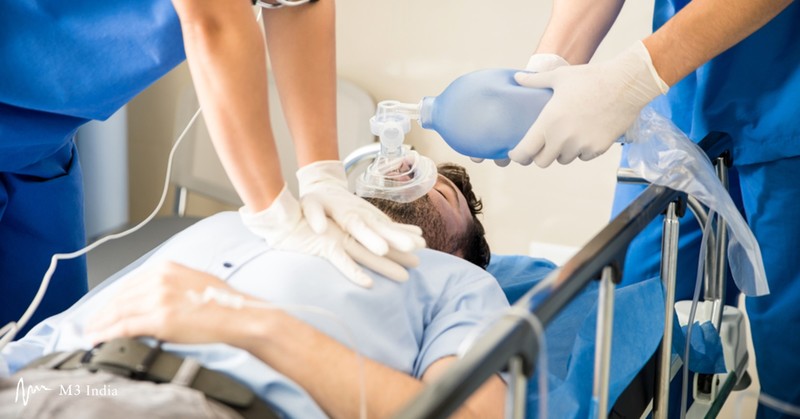The American Heart Association, the world’s leading nonprofit organization focused on heart and brain health for all, has compiled interim CPR guidelines to help rescuers treat victims of cardiac arrest with suspected or confirmed COVID-19.
For our comprehensive coverage and latest updates on COVID-19 click here.

With COVID-19 incidence currently increasing exponentially worldwide, the percentage of cardiac arrests with COVID-19 are also likely to increase. The evolving and expanding outbreak of COVID-19 cases creates challenges around resuscitation efforts and requires potential modifications of established processes and practices.
The Association, in collaboration with the American Academy of Pediatrics, American Society of Anesthesiologists, American Association of Respiratory Care, The Society of Critical Care Anesthesiologists and American College of Emergency Physicians, published “Interim Guidance for Basic and Advanced Life Support in Adults, Children and Neonates with Suspected or Confirmed COVID-19,” in its flagship journal, Circulation today.
The goal is to ensure that patients with or without COVID-19 who experience cardiac arrest have the best possible chance of survival without compromising the safety of rescuers.
“CPR remains a critical component of care for many of our patients, particularly during this pandemic, but it does place rescuers at increased risk of COVID-19 exposure,” said Dana P. Edelson, MD, MS, executive medical director of Rescue Care at the University of Chicago and corresponding author of the volunteer writing group. “This guidance draws on evolving science and expert opinion to help health systems and providers mitigate that risk with the hopes of maintaining the survival gains for cardiac arrest achieved over the past 2 decades.”
In addition to the statement, the Association has released a free 10-minute e-learning course to help health care providers understand the impact of the resuscitation guidelines.
Principles for resuscitation in suspected and confirmed COVID-19 patients provided in the statement include:
- Reducing provider exposure to COVID-19. Limit personnel in the room or on the scene to only those essential for patient care.
- Prioritizing oxygenation and ventilation strategies with lower aerosolization risk. Emphasis has been placed on the use of HEPA filters for all ventilation and early and successful intubation with mechanical intubation to minimize the airborne spread of the virus.
- Considering the appropriateness of starting and continuing resuscitation. Health care systems and EMS agencies should institute policies to guide front-line providers in determining the appropriateness of starting and terminating CPR for patients with COVID-19, taking into account patient risk factors to estimate the likelihood of survival.
- Continuing to encourage bystander CPR and defibrillation, for with those willing and able, especially if they are household members who have already been exposed to the victim at home. For out-of-home cardiac arrests, a face mask or cloth covering the mouth and nose of the rescuer and/or victim may reduce the risk of transmission to a bystander during Hands-Only CPR.
Supporting organizations for the statement include the American Association of Critical-Care Nurses and the National Association of EMS Physicians.
Additional resources and guidance on CPR training can be found here. Find general resources from the American Heart Association on COVID-19 here.